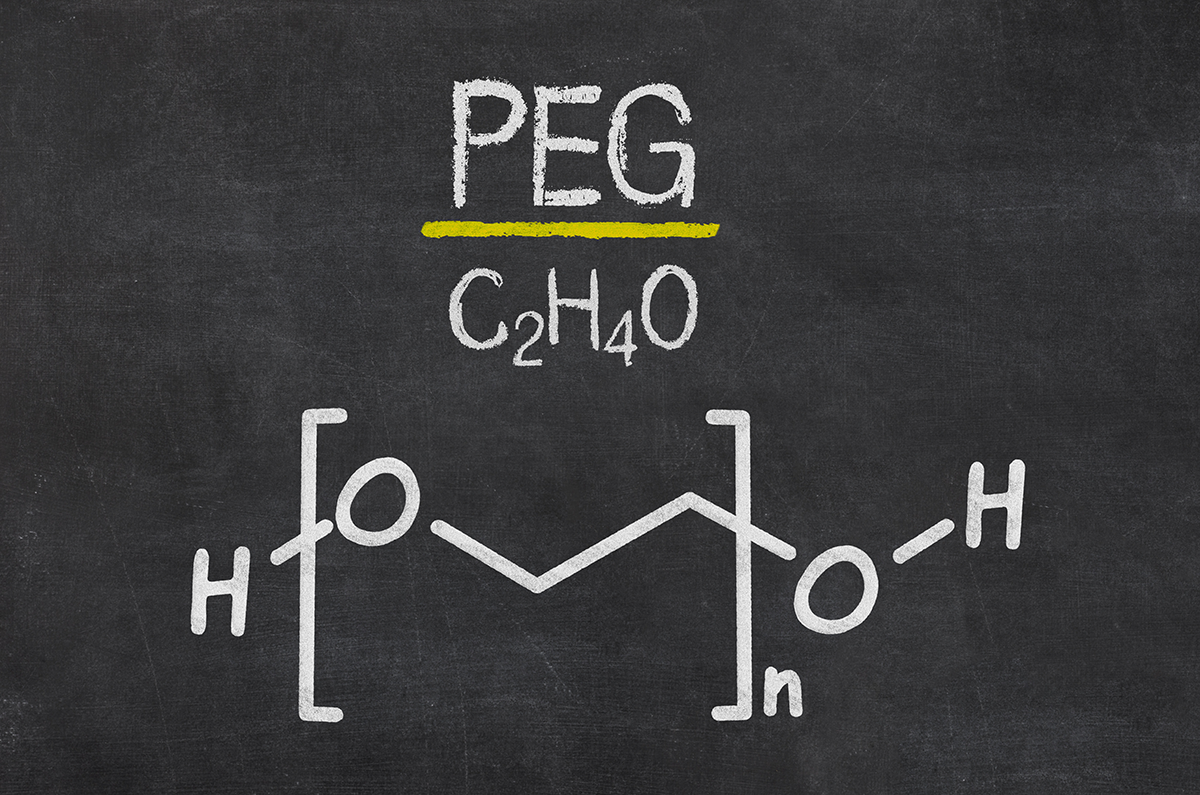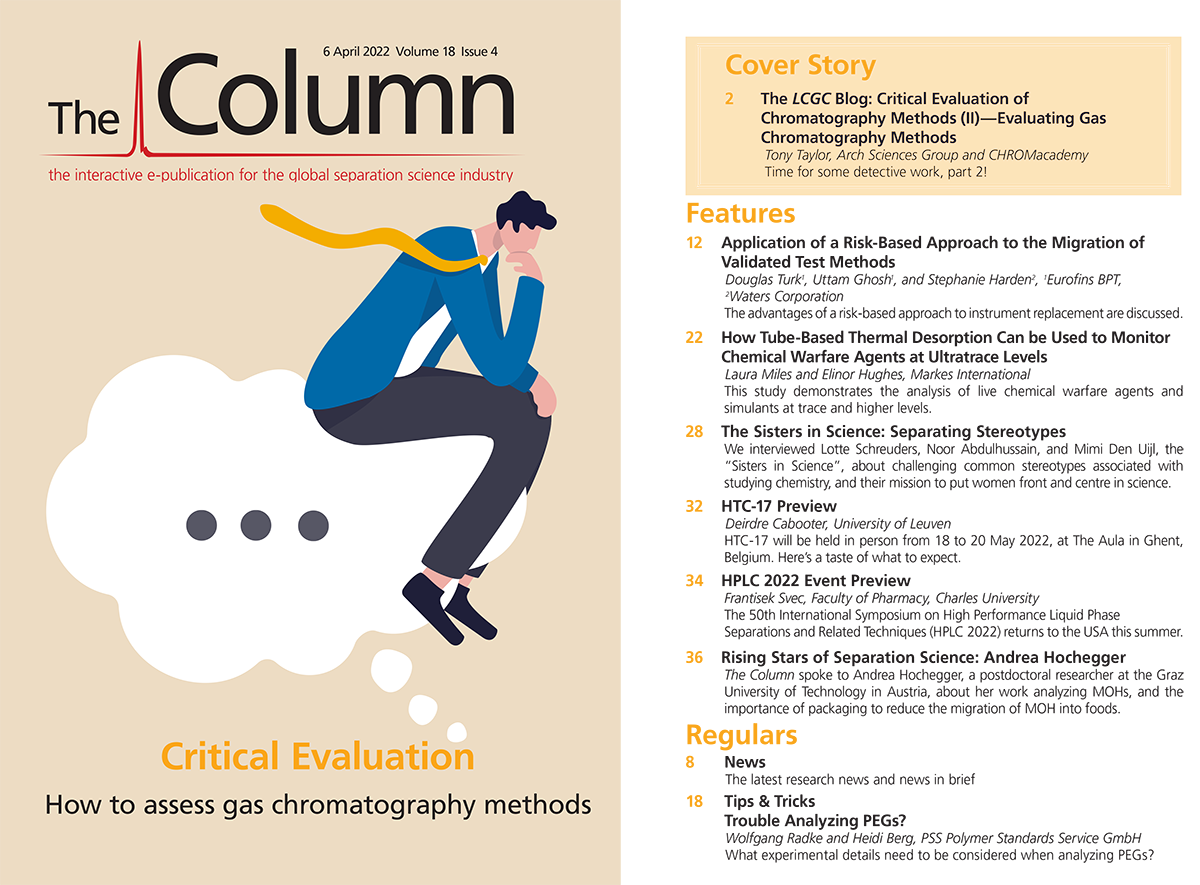The Sisters in Science: Separating Stereotypes
The Column interviewed Lotte Schreuders, Noor Abdulhussain, and Mimi Den Uijl, the “Sisters in Science”, about their path to separation science, their current research, challenging common stereotypes associated with studying chemistry, and their mission to put women front and centre in science.
Q. Where did the idea for the “Sisters in Science” group originate?
Lotte Schreuders: We actually started this account to show what it’s like to be a scientist to friends and family. Instagram was the preferred platform because it is popular and easy to maintain while doing our jobs. Little did we know we would gain so much attention! In the process we realized the amount of passion we have to make a difference. When we started the platform, we quickly started to receive attention from several journalists. During these interviews, we realized that one of the core reasons we started Sisters in Science was the presence of some pertinent stereotypes around chemists. Why do people think chemistry is only for boys, merely for geniuses, or that it’s incomprehensible? Why do they think that it’s dangerous? Why do they think that we’re all making drugs? Or that our field has no influence on our daily life? These stereotypes played a big role in our lives and made us question our own choices to go into chemistry too. We think many people are influenced by these ideas—that they don’t belong in the field—which is such a shame—especially given the fact that we need so many more chemists.
Fast forward to one year later and we’re proud to have established a platform where we break stereotypes, help students in all sorts of ways, and show that we are just normal people. We also show people in the chemistry field that there is a place for everyone here.
At our Instagram page, @SistersinScience_NL, we show our scientific work, make relatable videos, create tips and tricks posts, and explain typical academic terms, such as the impact factor. We want to make academia, science, and specifically chemistry more accessible, and most importantly stimulate young scientists-to-be. We strongly believe in the importance of role models for young people—if you can see it, you can be it.
Q. What kind of reception have you received for your group?
Mimi Den Uijl: One year of SistsersinScience_NL has given us a lot of positive feedback and support. Looking back, we did not expect this. We were actually scared about the feedback from our colleagues, friends, and family. Not just because we were putting ourselves out there, but we were also challenging some difficult subjects, such as diversity and inclusion in science, the absence of role models, and the stereotypes we have been confronted with. The amount of positive feedback, however, was mind‑blowing. We were interviewed about our initiative multiple times, did a live session with a Dutch politician, invited to be plenary speakers, invited to present at the official opening of the academic year of the University of Amsterdam, asked to appear on a Dutch television show as scientists, and even made it to live television very recently. This feedback has been very important for us to know that we were heading down the right path. Closer to home, we have also received a lot of recognition and support from our own university (University of Amsterdam) and our research group, which is very welcome, since we still do this alongside our academic careers. If it couldn’t get any better, we also received the Diversity Initiative Award of the Dutch Research Council (NWO), which showed that we’re making an impact.
Last, but definitely not least, we are slowly starting to recognize our own success and impact. It wasn’t that easy to start something like this next to our starter jobs, and we never realized when we started out that it would grow to such a platform. We are very excited for what’s
to come.
Q. What is your research focus?
MDU: I’m focused on two-dimensional liquid chromatography (2D-LC) with light-reaction modulation. In this project, called the TooCOLD project (Toolbox for studying the Chemistry Of Light-induced Degradation), we developed a light cell that we are currently implementing in a 2D‑LC setup. We can analyze many different kinds of samples from many fields, such as food science, cultural heritage, and water purification, which makes every sample a new story. I do this research under the supervision of Maarten van Bommel, Peter Schoenmakers, and Bob Pirok.
LS: Actually, I don’t really have a research focus. I was hired as a lecturer for the MSc chemistry, track analytical sciences. More specifically, to improve the quality of the education within this programme. I have a huge passion for education and am happy to pursue this in my daily work. I’m currently exploring the field of science education, and I’m part of the STEM-CPD@EUni project, together with colleagues Natasa Brouwer, Stefania Grecea, Jocelyne Vreede, and Bob Pirok. This project focuses on the professionalization of lecturers in higher education. Every step closer to an aligned, high-quality education system is
a win!
Noor Abdulhussain: My Ph.D. project was part of a larger project, the STAMP project (Separation Technology for A Million Peaks), which is funded under the Horizon 2020 Excellent-Science programme of the European Research Council. The main aim of this project is to achieve spatial three-dimensional (3D)-LC separation, which can offer a solution to achieve peak capacities in the order of a million. The separations are envisaged in a three-dimensional separation device. A novel way to produce efficient separation devices can be established using 3D-printing technologies. My research focus was to test the functionality and performance within these devices printed by different 3D-printers. I have focused on different aspects of these devices, such as 3D-printed materials or fabrication of stationary phases in these devices.
Q. How were you encouraged to get into STEM, and in particular chromatography?
MDU: This is a hard question for me. I was so stuck in the stereotypes about STEM that I was sure that it wasn’t for me. I liked to talk, for example, which is something I could not see in the chemistry field. I decided to go for an interdisciplinary bachelor at the University of Amsterdam, where I later acknowledged my talent for chemistry when I majored in it. I only later realized that analytical chemistry is one of the only types of chemistry that always revolves around one or more real‑life applications. I found that with all the problems we were solving, we were actually making the world a better place. During my masters in Amsterdam, I met Peter Schoenmakers, who guided me into chromatography. He was the one who put me forward for the position I currently have. Having him as a mentor has been a fantastic ride: he creates a free environment for his students to develop and pursue where they are at their best.
LS: I had an amazing high school teacher. She showed me that chemistry was also (to quote myself at 17 years old) “for normal people”. In addition to that, I was very good at the subject in high school. However, when I started studying, I actually struggled a lot. I failed my classes and barely made the cut to stay in the bachelor programme. The choice of analytical chemistry was based on the choice of my friends (one being Mimi) and realizing that all my projects and electives had been focused on analytical chemistry subjects! Oh, and I love puzzling!
NA: My choice for chemistry was pretty obvious. During high school, I used to like chemistry a lot and I enjoyed the experiments that we had to do, so I decided to study it for my bachelors. During my bachelor study, I was selected to participate in the Analytical Science Talent Programme (ASTP), which launched me into separation science. This was also one of the reasons why I decided to study chemistry during my master’s study. Like Mimi, Peter Schoenmakers also guided me in the world of chromatography and I had the opportunity to do my Ph.D. degree under his supervision.
Q. You have recently won the NWO Diversity Initiative Award—what are your plans for the prize money?
NA:We are very honoured and proud to receive the award. It’s amazing to receive acknowledgement outside of our university. With the prize money, we want to professionalize ourselves and our platform by, for example, investing in a professional website. More importantly, we want to reach out even more to our target audience. Although we have broad reach and a large audience that follows us, we have learned that we do not really reach high school students enough through our current platforms (Instagram, TikTok). These young people are overwhelmed by the amount of information available on these platforms and we feel like that it is difficult to get our message across. Therefore, we want to use our prize to reach these students. We cannot start early enough to excite them for a career in chemistry and show that these stereotypes are not set in stone. We are thinking of reaching them by, for example, offering workshops at high schools.
Q. In your opinion, what changes, if any, are needed to encourage more women to study separation science in the future?
MDU: First of all, these changes are needed. We don’t think women should be particularly encouraged to study separation science, but chemistry in general. We think that these stereotypes are currently preventing a very diverse group of people from going into chemistry. We hope that chemists realize that they can all contribute to achieve this. We believe that soft skills, such as communication, teamwork, and leadership are under-valued in academia—we should know better by now! Women in chemistry: show yourself!
Q. Which women in science do you consider as your role models?
MDU: Woah, this is difficult. I must say, with every step in my career I doubted the next step, and I think this is mainly because of the lack of role models. As I approach the end of my Ph.D., the same questions are still going through my head, “Do I belong here?” “Will this place make me happy if I can’t be me?” “Is it ok to just be me?” I look to my fellow Sisters for confirmation, so you could say they are my role models. Next to that, I receive a lot of support from my mentor, Peter Schoenmakers, and my friend, Bob Pirok. So maybe they are my role models? This question has kept me busy the last year and sometimes I feel that I am my own role model.
LS: A while ago, I asked my friend and co‑worker who his role models were and he pointed at us, Mimi, Noor, and myself. I was surprised and asked why—I mean, he’s in a higher position, older, and a very established scientist—he said: “Role models are not by definition more experienced, higher in the hierarchy, or older. They are the people that motivate, inspire, and ignite you.”
So, in the classical sense, I do not have a role model. However, with this newly found description, I’m proud to say I have so many—my fierce Sisters, Mimi and Noor, being two very important ones.
NA: Personally, I don’t have many role models in science, but within my network I consider my friend, Sinéad Currivan, as a mentor. She is a lecturer and principal investigator at Technological University Dublin. I truly admire her work ethic and her career achievements. She has supported me so much in my research and in my personal life, and has given me a lot of advice regarding career choices.
Another woman outside my network that has inspired me is Rana Dajani, an associate professor of biology and biotechnology. In her book Five Scarves: Doing the Impossible, she explores how our conceptions of success and gender equality relate to each other. The tone of the book reaches out to women to advocate a deep structural change to uplift each other in the field of science. She made me think that we don’t need role models, instead we need each other to uplift and support. That is exactly what I want to achieve with the Sisters in Science Instagram.
Q. Do you have any other plans to evolve the Sisters in Science projects?
LS: Yes, we do. Right now, we are developing workshops for a younger audience. We hope to reach this group at schools and at science festivals. We also collaborate with several parties to spread the word about stereotypes and science, for example, with Sciex on the Extraordinary Grace campaign and the national (Dutch) event of the VHTO, Girl’s Day—a day where girls between the ages of 10 and 15 are encouraged to visit science events in the Netherlands. We want to increase such collaborations to spread the word that if you can see it, you can be it! Finally, in collaboration with the University of Amsterdam, we plan to create vlogs (video blogs) to show the process of Ph.D. promotion in the Netherlands. Make sure you stay tuned to the YouTube channel of SisterinScience_NL!
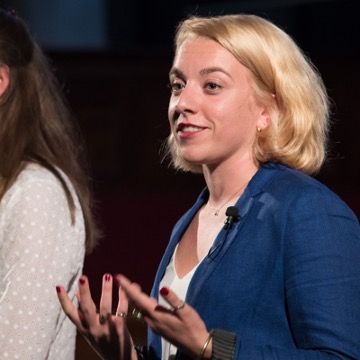
Lotte Schreuders obtained her joint degree (UvA/VU) bachelors’ in chemistry in 2017. In hindsight, she realized that all her projects were focused on analytical chemistry, making the decision about the track for her MSc chemistry a lot easier. In 2018, she started working at a tutoring institute (OVER ‘t IJ Huiswerkbegeleiding, Amsterdam) alongside her studies. It was here that she realized the impact of education and that she could help to make a difference. The passion for education kept growing and made her doubt a scientific career. She finished her M.Sc. degree in 2020 and one month later started her employment at the same MSc track for educational development at the University of Amsterdam, where she focuses on improving and maintaining quality within the programme. One example is the development of interactive, fun, and easy to implement online teaching methods. She is passionate to contribute to more equity in education and believes role models are an essential part here.
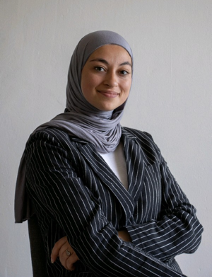
Noor Abdulhussain obtained her M.Sc. degree in 2017 from the University of Amsterdam. After that, she started a Ph.D. within ERC STAMP (Separation Technology for A Million Peaks) project at the University of Amsterdam. In 2019, she was decorated with the best poster award at HPLC2019 (Milan, Italy), and was invited to give a lecture at the Emerging Separations Technologies symposium (Chromatographic Society, London, UK). In 2019, LCGC Europe identified her as one of the “Rising Stars in Chromatography”. While her current work mainly focuses on functionality assessments of 3D-printed devices for application to multidimensional separations, she remains involved in studying fundamental separation mechanisms, including hydrodynamic chromatography and size‑exclusion chromatography. In January 2021, she founded the SistersinScience_NL Instagram platform, together with two of her colleagues, to show a glimpse of her work on social media and debunk stereotypes of chemists and other scientists.
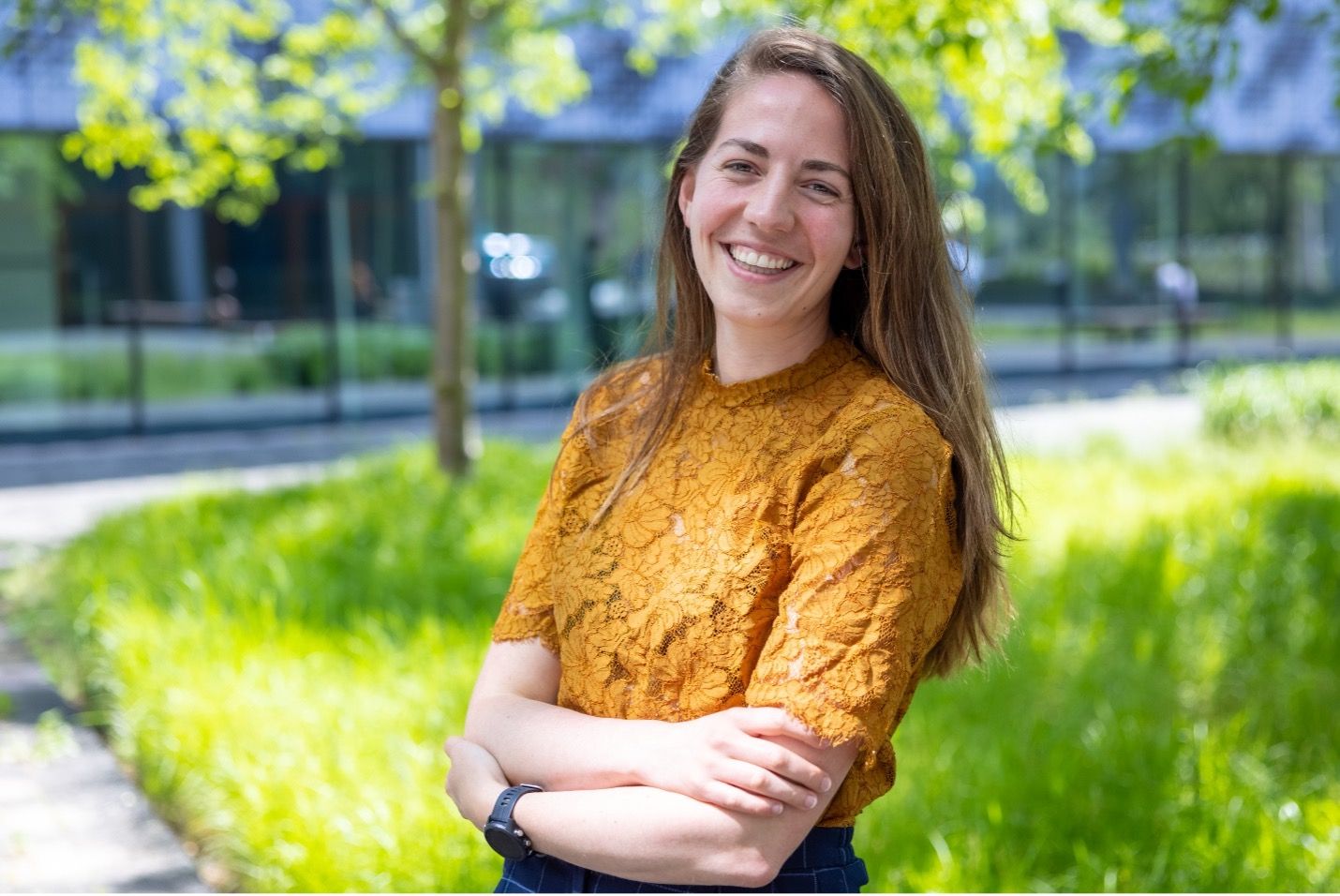
Mimi Den Uijl was born and raised in Amsterdam, where she studied natural and social sciences (Beta‑Gamma) at the University of Amsterdam. She later majored in chemistry and finished her bachelors with a project in environmental chemistry, where her interest was sparked in analytical chemistry. She chose to follow the masters in analytical chemistry at the University of Amsterdam and Free University Amsterdam, where she did her research project in gas chromatography–mass spectrometry (GC–MS) with a supersonic molecular beam interface. After this project, she began a Ph.D. in two-dimensional liquid chromatography with photoreaction modulation in the TooCOLD project (Toolbox for studying the Chemistry Of Light-induced Degradation), where she works under the supervision of Peter Schoenmakers, Maarten van Bommel, and Bob Pirok.
Instagram: @SistersinScience_NL
E-mail: sistersinsciencenl@gmail.com
Website: www.sistersinscience.nl
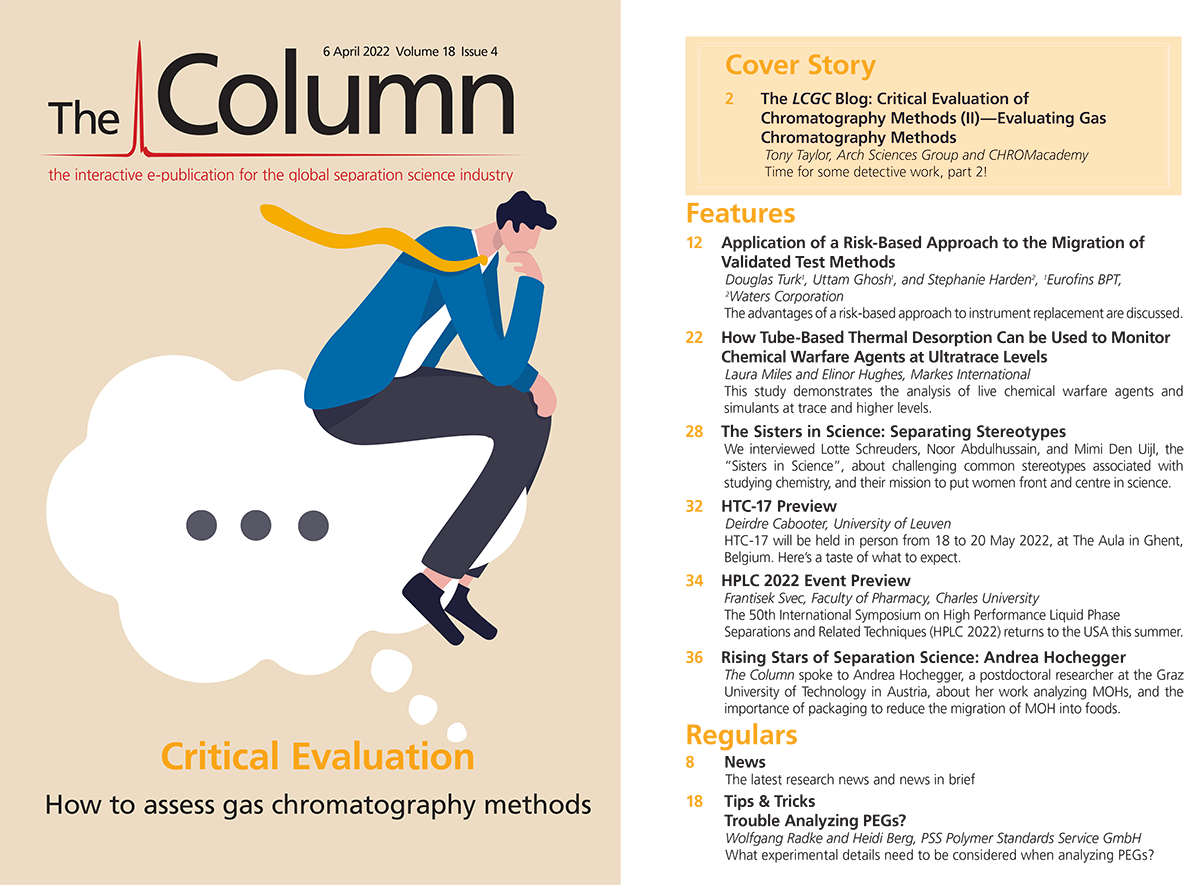
Common Challenges in Nitrosamine Analysis: An LCGC International Peer Exchange
April 15th 2025A recent roundtable discussion featuring Aloka Srinivasan of Raaha, Mayank Bhanti of the United States Pharmacopeia (USP), and Amber Burch of Purisys discussed the challenges surrounding nitrosamine analysis in pharmaceuticals.
Silvia Radenkovic on Building Connections in the Scientific Community
April 11th 2025In the second part of our conversation with Silvia Radenkovic, she shares insights into her involvement in scientific organizations and offers advice for young scientists looking to engage more in scientific organizations.

.png&w=3840&q=75)

.png&w=3840&q=75)



.png&w=3840&q=75)



.png&w=3840&q=75)






